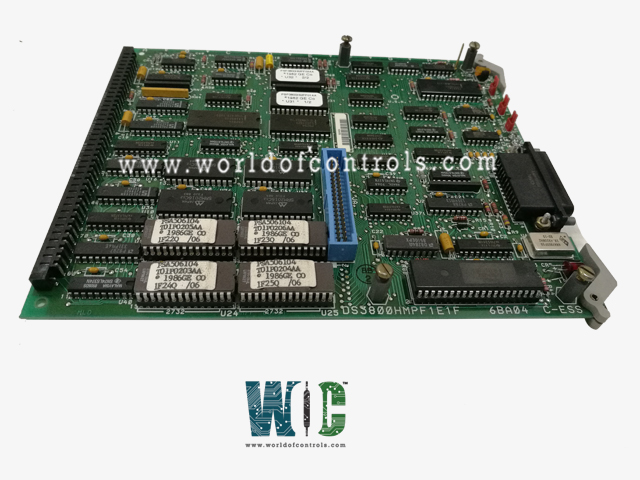
World Of Controls understands the criticality of your requirement and works towards reducing the lead time as much as possible.
DS3800HMPF1F - Microprocessor Controller Board (8086 Micro Computer) is available in stock which ships the same day.
DS3800HMPF1F - Microprocessor Controller Board (8086 Micro Computer) comes in UNUSED as well as REBUILT condition.
To avail our best deals for DS3800HMPF1F - Microprocessor Controller Board (8086 Micro Computer), contact us and we will get back to you within 24 hours.
SPECIFICATIONS:
Part Number: DS3800HMPF1F
Manufacturer: General Electric
Series: Mark IV
Product Type: Microprocessor Controller Board (8086 Micro Computer)
Number of channels: 12
Input Power Supply: +5V
Input Voltage Range: 24 V dc
Operating temperature: -40 to +85°C
Size: 8.25 cm high x 4.18 cm
Repair: 3-7 Day
Availability: In Stock
Country of Origin: United States
FUNCTIONAL DESCRIPTION:
DS3800HMPF1F is a Microprocessor Controller Board (8086 Micro Computer) manufactured and designed by General Electric as part of the Mark IV Series used in GE Speedtronic Control Systems. A microprocessor board, often referred to as a development board or single-board computer (SBC), is a hardware platform that integrates a microprocessor or microcontroller along with supporting components such as memory, input/output interfaces, and power management circuitry. These boards are designed to facilitate the development and testing of electronic systems and applications. A microprocessor controller board is a central component in many electronic systems, serving as the brain that manages and coordinates various tasks and functions. Here's a breakdown of what typically goes into designing one:
COMPONENTS REQUIRED:
CIRCUIT DESIGN:
PCB LAYOUT:
WOC offers the largest inventory of GE Speedtronic Control System replacement parts, including both new and refurbished items, all backed by a warranty. Our team of experts is available 24/7 to support your OEM needs and assist with any automation requirements. For pricing and availability of parts and repairs, please contact our team by phone or email.
What is the difference between a microprocessor and a microcontroller?
A microprocessor is a general-purpose processing unit that requires external components (such as memory and peripherals) to function as a complete system. In contrast, a microcontroller integrates the CPU, memory, and I/O peripherals on a single chip, making it a self-contained computing device suitable for embedded applications.
What are the common applications of microprocessor controller boards?
Microprocessor controller boards find applications in a wide range of industries and systems, including industrial automation, robotics, automotive electronics, consumer electronics, IoT devices, medical devices, and more.
How do you program a microprocessor controller board?
Programming a microprocessor controller board involves writing software (often referred to as firmware) in a programming language such as C, C++, or assembly language. The firmware is then compiled and loaded onto the microprocessor controller board using a development environment and programming tools specific to the microprocessor architecture.